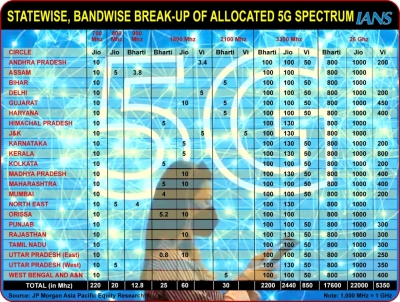By T.V.Ramachandran The US Federal Communications Commission (FCC) recently suggested revising the definition of broadband to require a minimum speed of download of 100 milliseconds, and upload speeds of 30 milliseconds per second.This is to the of the success of 5G deployments all over the globe, and the race across the globe to get the fastest speeds and efficiency with this new technology.
According to Ookla Speedtest Intelligence (Q3 2021), South Korea recorded the fastest median download speed on 5G, which was 492.48 Mbps, putting it on to a top 10 list which includes Norway (426.75 Mbps), United Arab Emirates (409.96 Mbps), Saudi Arabia (366.46 Mbps), Qatar (359.64 Mbps) and Kuwait (340.62 Mbps) then Sweden, China, Taiwan and New Zealand.
The signs are easy to observe! The world is rapidly moving in the pursuit of the highest speeds possible in the realm of digital connectivity, in both in the sense of capacities and the quality.
Being the second most nation that is connected to the internet in the world What is the way India perform in this field? And what are our next plans for this?
The speeds of India’s 4G today are, at the highest, average.We’re in the 118th spot among 139 nations worldwide in speed of mobile data downloads, with a speed of 14 milliseconds which is just half of the global average of 31.01 mbps (Ookla Speedtest Global Index).This means that we have a long way to go to achieve the top spot globally!
On the other the other hand, India’s data usage is increasing rapidly and it is predicted to increase with the launch of 5G.In the last five years, the data traffic of 4G was up 6.5 times, while mobile broadband users increased 2.2 times.With CAGR of 31 percent in the five years prior the consumption of mobile data has increased to 17 GB per monthly user.
Videos downloaded and streamed make up 70% of our current data usage.It is notable that rural users are using more video content due to their semi-literate background and the trend is set to increase.
5G, with its high speed and capacity for data, as well as ultra-low latency applications, gives India an opportunity to revive.However, while auctions to build public networks for 5G are currently being conducted, the lessons from previous deployments of 2G/3G/4G suggest that it will take three to five years for a substantial national public network to be operational in India.
The 5G network might take longer because of the lengthy work needed to optimize the network’s architecture and of fibre lay-out and the streamlining of RoW procedures street furniture readiness etc.In the meantime private networks that are easily deployed, offer an chance to India to take on a significant part in the world’s industrial landscape.
With the geo-political environment favorable in our favor, as well as the government’s visionary plan of establishing India as the manufacturing, supply chain and R&D center of the globe, private 5G networks could improve and streamline the capabilities of the Indian Industries and enterprises significantly to achieve these goals.
The lack of semiconductors in the world or fabrication equipment, devices, equipment, or the latest technology solutions and products that meet the needs of the latest and emerging technology — the potential is huge for India to benefit from.
The Indian government of India through the Union Cabinet, passed a historic decision to allow the establishment of CNPNs by companies to enhance their capabilities and efficiency.
However, a possible roadblock in the implementation of 5G is the requirement that an organization to have a net-worth of 100 crores in order to be eligible, in accordance with the guidelines.
This will prevent the vital aspect of innovation from coming into play, since startups or research and development institutions, as well as academic institutions that do not have the resources to support such a large investment and resources, will not be able to reap the benefits of 5G that is confined or to participate in the process of development.This could effectively stop the progress.
Additionally it has been established that the need to leverage CNPNs can be as critical as it can be for India to take the global advantage in many industrial areas.In this scenario the requirement of conducting demand studies to determine the best way to allocate allocation of spectrum seems ineffective and could result in delay in this crucial process, especially since Non-Public Networks are already a worldwide apex of technology with more than 794 private networks in operation in 68 countries around the globe.
With the country’s massive population of 1.4 billion as well as hundreds of big companies, huge demands in agriculture and general demographics, we must have at 150-200 private networks on an equal basis.We must catch up.
Of course, when the 5G services are made available to the public across India in the near future, the advantages of 5G will be extended to all citizens, bringing about economic growth, socio-economic development and improvements in the quality of living.In the meantime, don’t let the obstacles impede the Digital India growth story, and let us make use of 5G CNPNs to the fullest extent to realize our global vision of digital leadership.
(T.V.Ramachandran is T.V.Ramachandran is the President of Broadband India Forum and is an Honorary Fellow of Institution of Engineering and Technology (IET), London and also the Institution of Electronics and Telecommunication Engineers, India)
na/arm
.







